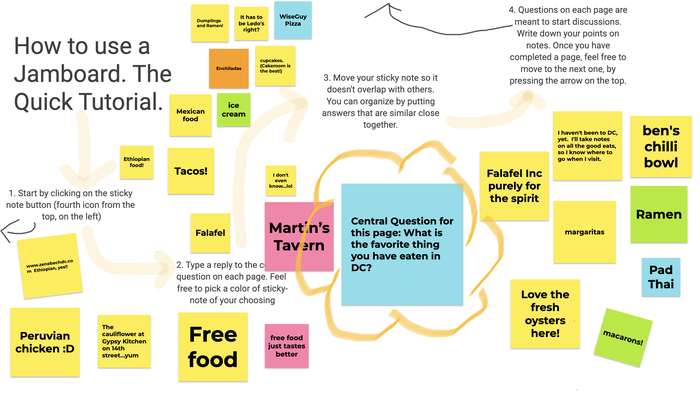French
Professor Webel’s students in FREN-112 submit their papers via Google Docs so she may correct them directly in the document. Webel uses different colors to indicate various types of errors along with abundant usage of comments; she will also occasionally use the ‘Suggesting’ mode to make the correction but allow them to see the change. Webel lists her assignments or homework in a Google Doc, which can be embedded or linked in a Canvas page, and which allows her to update as needed.
Webel has also converted all her handouts to Google Docs, even if she provides a paper version, which allows her to create links in Canvas to the documents for reference and allows for collaboration with colleagues.
Lastly, when holding class in Zoom, she uses Google Docs for students to work on a document/activity together in breakout rooms.
Many other professors use the Google Docs integration with the Collaboration feature in Canvas. This tool allows for various combinations of students to collaborate or to provide a private area for student and teacher for such activities as journal writing.
Learning, Design, and Technology
In her graduate classes in the Learning, Design, and Technology program, Professor Debelius uses Google Jamboards as a brainstorming tool. Because participants are both in-person and remote, Jamboards serve as a common space where all students can participate simultaneously.
Debelius writes a prompt on the Jamboard and asks students to contribute 'sticky notes' with their ideas, comments, or feedback. Students can move their notes around, respond to others, and add arrows and images. Jamboards can contain multiple pages, which allows faculty to ask a series of questions or use a single jamboard for a class session or entire course.






